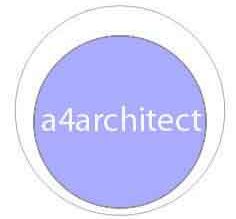Land % to total construction cost.
How much does land contribute to the real estate sector?
Land contributes between 10% to 50% of the total const of a project in Kenya.
Land where the project is low-rise such as bungalow or maisonette works out at between 25% to 50% of the cost of construction.
In upmarket areas such as Karen, Runda, where there is a restriction on land size to 0.5 acre for only 1 house, land works out to 50% of the cost.
In middle class areas where bungalow construction is the norm such as Kitengela and Rongai, land works out to 35% of the cost of construction.
In Nairobi CBD where buildings are on average 10 floors high, land works out to 15% of the total construction cost.
In middle class areas where flats/apartments are constructed eg Rongai, land works out to 20% of the total const of construction.
In short, people who have constructed several storeys high do not feel the effect of high land price.
Energy.
How can the contribution of energy be quantified in the real estate sector?
Energy contribution in real estate is mainly used in heating bathroom water, cooking, lighting, electronics such as TV,Fridge etc.
With solar power panels becoming cheaper, cost of energy in residential houses can be reduced through use of solar power for heating and lighting purposes. Other countries such as Germany have very high use of solar power, nearly 74% of energy generated by wind and solar.
Solar power installation is expensive in the storage part where a huge battery capacity is needed. Countries such as Germany have a system whereby solar power generated during the day by houses is distributed through the electricity network which subtracts at the electricity meter and then the house uses normal power at night which cancels out at the meter.
Kenya should study the German model carefully and follow it so as to achieve the same results, more so because Kenya, being on the equator, gets more solar energy from the Sun than Germany.
Taxation.
Possible revenues from VAT on commercial property.
Rental income tax is charged on commercial property in Kenya.
The effect of this tax is an increase in rent since land lords simply add on the tax to new tenants. This increases the cost of living, resulting in high inflation hence lower productivity hence a poorer economy.
Land Value taxation/idle land taxation, same as implemented in South Africa, USA, South Korea and Denmark, is much better since it works in a win win situation for the economy. Land Value taxation ensures land owners build and utilise their lands to the maximum so as to afford the tax. In the process, this creates employment whereby land owners need to hire labour to plan if on agricultural land, or build if on urban land, hence reducing unemployment.
Possible revenue generation from landlords rental income.
Revenue generation from rental income tax will in the long run cause higher rents which in turn cause less productivity which in turn cause a poorer economy since the tenants will be over burdened by the tax hence unable to produce more.
Steel.
How much does steel and iron products contribute to the overall construction costs?
Steel is used mainly in concrete reinforcement works for high-rise storied buildings. In Kenya, structural designs are mostly to the British standard, which specifies concrete and steel for structural support eg slabs, beams, columns.
Reinforced concrete uses less steel hence the overall const of steel not much. In American/Chinese standards, steel is used as structural support for beams .columns and slabs eg in Pre engineered buildings coming up in Nairobi eg next to Mutula Kilonzoo advocates along Ngong road and near Yaya centre in Hurlingham.
Steel is also used to construct window frames , security grills and doors.
Francis Gichuhi Kamau, Architect.
info@a4architect.com


Leave a Reply